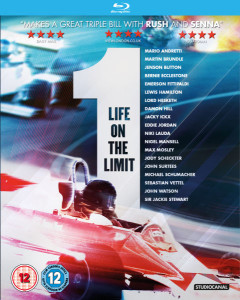
The 1st of May will mark twenty years since the death of the great Ayrton Senna – The last driver to die in a Formula 1 race.
Before the fateful day and for many years afterwards Professor Sid Watkins was at the forefront and leading the vital charge towards a safer sport. His desire was to make the sport safe so that no driver would ever again lose his life in a racing car. Twenty years after one the darkest days in the history of the sport Prof Watkins is no longer around to see the result of his and many other’s groundbreaking work.
The evolution of safety in Formula 1 is brilliantly documented in the film 1: Life On The Limit. It starts with Martin Brundle’s crash at the 1996 Australian grand prix. Despite looking horrific from the outside Brundle jumps out of the car, uninjured, and runs down the pitlane to his spare car; a seemingly ordinary occurrence in modern Formula 1.
The film spans the 1950s, 60s and 70s – the most dangerous era of the sport. Three-time world champion Jackie Stewart was just one of the pioneers of making Formula 1 a safer sport. He describes getting out of the cockpit after the 1968 German GP:
 “We had a driver die every month on the same weekend for four consecutive months. And we were racing on the fifth weekend in circumstances that we should never have been allowed to go out in. You couldn’t see 60 metres of visibility because of the fog and heavy rain. And the very first question I asked when I got out of the car was, “Is everybody OK?”
“We had a driver die every month on the same weekend for four consecutive months. And we were racing on the fifth weekend in circumstances that we should never have been allowed to go out in. You couldn’t see 60 metres of visibility because of the fog and heavy rain. And the very first question I asked when I got out of the car was, “Is everybody OK?”
It is a tragic reality that because of those who lost their lives in this deadly era of the sport improvements to safety became paramount. Throughout the film Jackie Stewart, Emerson Fittipaldi, Mario Andretti and Niki Lauda recount how they strove to make the sport safer.
Bernie Ecclestone and Max Mosley feature heavily in the film as well. The link between Ecclestone and the decrease in fatalities after he takes control of the sport is unmistakable. Several instances are depicted where Ecclestone refuses to race at certain tracks if the necessary medical facilities were not available and up to standard.
The film includes some unsettling footage which includes the fatal crash of, amongst others, Jochen Rindt. From these painful scenes the film starts to build on the incremental improvements in safety. Medical centres and medical helicopters became mandatory at every racing track, barriers and circuit are re-designed and helmet technology is completely transformed.
The film creates a stark contract between the first three decades of the sport and what we know it as now. Drivers getting into their cockpits had no idea if they would survive the race or which of their friends might die that. In stark contrast Lewis Hamilton said during his interview that he has never feared or worried about death and that “it’s almost like you have control of the danger.”-An astonishing statement in relation to those early years.
no idea if they would survive the race or which of their friends might die that. In stark contrast Lewis Hamilton said during his interview that he has never feared or worried about death and that “it’s almost like you have control of the danger.”-An astonishing statement in relation to those early years.
On the 1st of May as Professor Sid Watkins attempted to assist the injured Senna he recounts that as the clouds parted over Imola he knew there was nothing that could be done for his great friend. Since that day and thanks to pioneers such as Prof Sid Watkins, who delivered four decades of unprecedented service to Formula 1, no driver has lost his life since.
As we remember the day Formula One lost Ayrton Senna, you can read our special tribute to Senna here. Or watch the full 1994 San Marino Grand Prix here.


